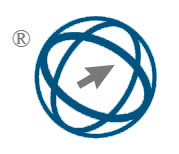Integrating Attention Mechanisms and ResNet-50 For Enhanced Driver Sleepiness Detection
Abstract
One of the main causes of traffic accidents is driver exhaustion, making the development of advanced systems crucial for real-time monitoring and preventive measures. This work presents a novel framework for intelligent information aggregation, enhancing decision-making in sleepiness detection by leveraging attention mechanisms and ResNet-50, a state-of-the-art deep convolutional neural network. The proposed system reliably classifies driver states by integrating logical inference with visual data elements such as head movements, eye closure patterns, and face recognition Experimental evaluations on the Driver Drowsiness Dataset (DDD) demonstrate the model’s effectiveness, achieving an accuracy of 93.5%, a precision of 94.2%, a recall of 92.7%, and an F1-score of 93.4% These results highlight the synergy between artificial intelligence and attention mechanisms in improving classification performance. This research provides a robust and scalable foundation for AI-driven decision-making, contributing to safer and more intelligent transportation systems.
Full Text:
PDFReferences
V. Lesser, B. Horling, F. Klassner, A. Raja, T. Wagner, and S. X. Zhang, “Big: An agent for resource-bounded information gathering and decision making,” Artificial Intelligence, vol. 118, no. 1-2, pp. 197–244, 2000.
M. Andronie, G. L˘az˘aroiu, M. Iatagan, C. Ut, ˘a, R. S, tef˘anescu, and M. Cocos, atu, “Artificial intelligence-based decision-making algorithms, internet of things sensing networks, and deep learning-assisted smart process management in cyber-physical production systems,” Electronics, vol. 10, no. 20, p. 2497, 2021.
Y. Duan, J. S. Edwards, and Y. K. Dwivedi, “Artificial intelligence for decision making in the era of big data–evolution, challenges and research agenda,” International Journal of Information Management, vol. 48, pp. 63–71, 2019.
P. Tang, Y. Dong, Y. Chen, S. Mao, and S. Halgamuge, “Qoe-aware traffic aggregation using preference logic for edge intelligence,” IEEE Transactions on Wireless Communications, vol. 20, no. 9, pp. 6093–6106, 2021.
J.-B. Yang and D.-L. Xu, “Nonlinear information aggregation via evidential reasoning in multiattribute decision analysis under uncertainty,” IEEE Transactions on Systems, Man, and Cybernetics-Part A: Systems and Humans, vol. 32, no. 3, pp. 376–393, 2002.
Z. Zhao, X. Liu, and H. Zhang, “Driver drowsiness detection with convolutional neural networks,” IEEE Access, vol. 6, pp. 76701–76711, 2018.
X. Han, S. Xiao, J. Sheng, and G. Zhang, “Enhancing efficiency and decision-making in higher education through intelligent commercial integration: Leveraging artificial intelligence,” Journal of the Knowledge Economy, pp. 1–37, 2024.
M. P. Papazoglou, S. C. Laufmann, and T. K. Sellis, “An organizational framework for cooperating intelligent information systems,” International Journal of Intelligent and Cooperative Information Systems, vol. 1, no. 01, pp. 169–202, 1992.
V. Asuncion, Y. Chen, Y. Zhang, and Y. Zhou, “Ordered completion for logic programs with aggregates,” Artificial Intelligence, vol. 224, pp. 72–102, 2015.
W. Li, Z. Liu, and M. Zhu, “Driver drowsiness detection based on image processing and machine learning,” Computers, Materials Continua, vol. 56, no. 3, pp. 405–416, 2017.
V. Kumar, S. Sharma, and Ranjeet, “Driver drowsiness detection using modified deep learning architecture,” Evolutionary Intelligence, vol. 16, no. 6, pp. 1907–1916, 2023.
K. Bauer, M. von Zahn, and O. Hinz, “Expl (ai)ned: The impact of explainable artificial intelligence on users’ information processing,” Information Systems Research, vol. 34, no. 4, pp. 1582–1602, 2023.
G. Kaur, M. Singh, and H. Kaur, “Driver drowsiness detection using convolutional neural networks and support vector machines,” Journal of Electrical Engineering and Technology, vol. 16, no. 4, pp. 1825–1834, 2021.
N. Behar and M. Shrivastava, “Resnet50-based effective model for breast cancer classification using histopathology images,” CMES-Computer Modeling in Engineering & Sciences, vol. 130, no. 2, 2022.
A. Vaswani, N. Shazeer, N. Parmar, J. Uszkoreit, L. Jones, A. N. Gomez, L. Kaiser, and I. Polosukhin, “Attention is all you need,” Advances in Neural Information Processing Systems, vol. 30, pp. 5998–6008, 2017.
J. Hu, L. Shen, and G. Sun, “Squeeze-and-excitation networks,” IEEE Transactions on Pattern Analysis and Machine Intelligence, vol. 42, no. 8, pp. 2011–2023, 2018.
M. Doumpos and E. Grigoroudis, Multicriteria Decision Aid and Artificial Intelligence: Links, Theory and Applications. John Wiley & Sons, 2013.
H. Kumar and P. K. Singh, “Comparison and analysis on artificial intelligence-based data aggregation techniques in wireless sensor networks,” Procedia Computer Science, vol. 132, pp. 498–506, 2018.
Z. Xu, “Linguistic aggregation operators: An overview,” Fuzzy Sets and Their Extensions: Representation, Aggregation and Models, pp. 163–181, 2008.
A. Shabbir, N. Ali, J. Ahmed, B. Zafar, A. Rasheed, M. Sajid, A. Ahmed, and S. H. Dar, “Satellite and scene image classification based on transfer learning and fine tuning of ResNet50,” Mathematical Problems in Engineering, vol. 2021, no. 1, p. 5843816, 2021.
G. Wiederhold, “Intelligent integration of information,” in Proceedings of the 1993 ACM SIGMOD International Conference on Management of Data, pp. 434–437, 1993.
P. Wang, J. Han, C. Li, and R. Pan, “Logic attention-based neighborhood aggregation for inductive knowledge graph embedding,” in Proceedings of the AAAI Conference on Artificial Intelligence, vol. 33, pp. 7152–7159, 2019.
S. Herath Pathirannehelage, Y. R. Shrestha, and G. von Krogh, “Design principles for artificial intelligence-augmented decision making: An action design research study,” European Journal of Information Systems, pp. 1–23, 2024.
E. Rezende, G. Ruppert, T. Carvalho, F. Ramos, and P. De Geus, “Malicious software classification using transfer learning of ResNet-50 deep neural network,” in 2017 16th IEEE International Conference on Machine Learning and Applications (ICMLA), pp. 1011–1014, IEEE, 2017.
A. S. B. Reddy and D. S. Juliet, “Transfer learning with ResNet-50 for malaria cell-image classification,” in 2019 International Conference on Communication and Signal Processing (ICCSP), pp. 0945–0949, IEEE, 2019.
S. Rajpal, N. Lakhyani, A. K. Singh, R. Kohli, and N. Kumar, “Using handpicked features in conjunction with ResNet-50 for improved detection of COVID-19 from chest x-ray images,” Chaos, Solitons & Fractals, vol. 145, p. 110749, 2021.
J. Minker, Logic-Based Artificial Intelligence, vol. 597. Springer Science & Business Media, 2012.
S. H. Pathirannehelage, Y. R. Shrestha, and G. von Krogh, “Design principles for artificial intelligence-augmented decision making: An action design research study,” European Journal of Information Systems, pp. 1–23, 2024.
J. Lindqvist, “Logics for information aggregation,” in Proceedings of the 2023 International Conference on Autonomous Agents and Multiagent Systems, pp. 2967–2969, 2023.
T. Calvo, G. Mayor, and R. Mesiar, Aggregation Operators: New Trends and Applications, vol. 97. Springer Science & Business Media, 2002.
H. Chen, J. Liu, and X. Li, “Driver drowsiness detection using a multimodal approach: Fusion of EEG and eye tracking,” IEEE Transactions on Industrial Informatics, vol. 16, no. 5, pp. 3411–3421, 2020.
E. Priyanka, S. Thangavel, K. M. Sagayam, and A. A. Elngar, “Wireless network upgraded with artificial intelligence on the data aggregation towards the smart internet applications,” International Journal of System Assurance Engineering and Management, vol. 13, no. 3, pp. 1254–1267, 2022.
R.-X. Ding, I. Palomares, X. Wang, G.-R. Yang, B. Liu, Y. Dong, E. Herrera-Viedma, and F. Herrera, “Large-scale decision-making: Characterization, taxonomy, challenges and future directions from an artificial intelligence and applications perspective,” Information Fusion, vol. 59, pp. 84–102, 2020.
A. Çınar, M. Yıldırım, and Y. Eroğlu, “Classification of pneumonia cell images using improved ResNet50 model,” Traitement du Signal, vol. 38, no. 1, pp. 165–173, 2021.
S. Abnar and W. Zuidema, “Quantifying attention flow in transformers,” Advances in Neural Information Processing Systems (NeurIPS), vol. 33, pp. 837–850, 2020.
X. Ding, H. Zhang, and N. Ma, “Acnet: Strengthening the kernel skeletons for powerful CNN via asymmetric convolution blocks,” Proceedings of the IEEE International Conference on Computer Vision (ICCV), pp. 1911–1920, 2019.
S. Ghosh and S. Sanyal, “Understanding dropout regularization in neural networks through ablation,” arXiv preprint arXiv:1903.06764, 2019.
Z. Xie, S. Liu, and Y. Hu, “Exploring deep neural networks via layer-wise relevance propagation,” vol. 119, pp. 4185–4194, 2020.
M. D. Zeiler and R. Fergus, “Visualizing and understanding convolutional networks,” European Conference on Computer Vision (ECCV), pp. 818–833, 2014.
Q. Wang, B. Wu, and P. Zhu, “Efficient attention mechanism for convolutional neural networks,” in Proceedings of the IEEE Conference on Computer Vision and Pattern Recognition (CVPR), pp. 1587–1595, 2020.
W. Islam, M. Jones, R. Faiz, N. Sadeghipour, Y. Qiu, and B. Zheng, “Improving performance of breast lesion classification using a ResNet50 model optimized with a novel attention mechanism,” Tomography, vol. 8, no. 5, pp. 2411–2425, 2022.
DOI: https://doi.org/10.31449/inf.v49i15.7977

This work is licensed under a Creative Commons Attribution 3.0 License.









